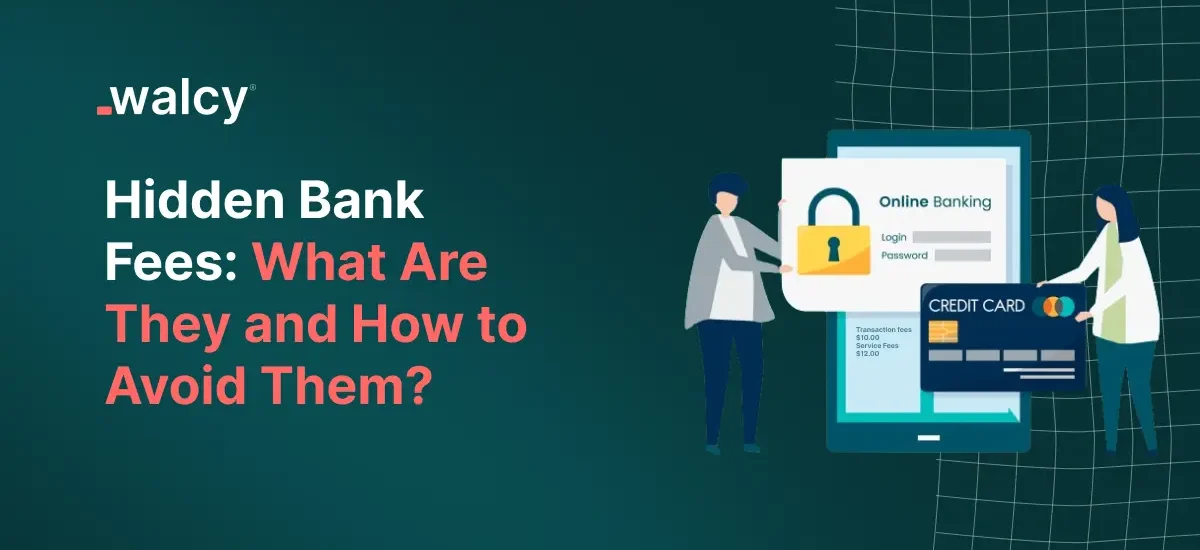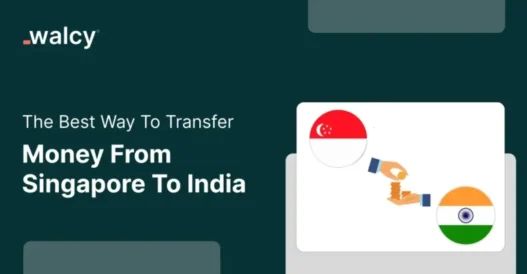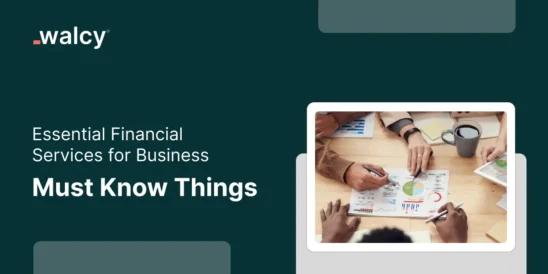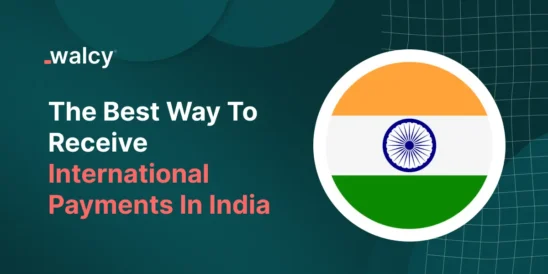If you are regular to banking service, you might have noticed some unwanted costs which you have been charged. To say the least, consumers at the bank sometimes underestimate hidden bank charges, and, when they come up, they can be a shocker. Over time, little changes make a huge difference in your financial health. It is crucial to know what the hidden fees are, how to recognize them, approaches to avoiding these bank fees, and ways of better financial management.
Understanding Hidden Bank Fees
Hidden bank fees point to the charges leveled against accounts and transactions and are sometimes not disclosed upfront. These can take several forms which include monthly maintenance fees, overdraft fees, ATM fees, and foreign transaction fees, among others. These fees, strictly speaking, are not secrets, but there are very few that are prominently displayed in a manner likely to catch one unaware in a bank statement.
Those hidden fees can get quite heavy, especially for the ones who want to save or live on a tight budget. Understanding such hidden charges is crucial in todays world because it will help you to make better management of your finances. Moreover, it also helps to prevent yourself from loosing money unwantedly.
What Are Common Hidden Bank Fees
Monthly Maintenance Fees:
Most banks charge a monthly maintenance fee just for maintaining an account with the bank. Most of these fees can be avoided if the depositor meets some conditions, such as keeping an average minimum balance or setting up some direct deposits. If you are not aware of these conditions, you may be losing money every month.
Overdraft Fees:
These are the fees charged when you spend beyond what is in your account. Overdraft fees can escalate quite high and become uncontrollably high if one is not very careful. Some banks do provide overdraft protection, but some extra fees may sneak into this seemingly good service.
ATM Fees:
Each time you are using any out-of-network ATM, it comes up with huge fees. These fees may be charged by the bank owning the ATM and also from your bank. Be aware of which ATMs are in your bank’s network to not incur these charges.
Foreign Transaction Fees:
The cost of using your card abroad, or such activities through foreign currencies, includes a foreign transaction fee. Mostly in the form of a percentage of the amount transacted, they can very quickly add up if you, say, travel a lot or purchase frequently abroad.
Paper Statement Fees:
Some banks charge for the actual postage of paper bank statements in the mail. This usually can be avoided by having statements electronically, but it is good to know just in case one prefers a paper statement.
Avoid excessive transaction fees:
It’s an unavoidable fact that, in most cases, there is a limit on the number of transactions that can be made in savings accounts in a month. If one goes over this limit, then there is a substantial fee for it. However, by knowing these limits, manage your transactions such that these fees are avoided.
Account Closure Fees:
This is whereby when you open an account and, at the same time, close it within a stipulated period, you will be charged. Often, this may simply be a deterrent to having a churn of accounts.
Wire Transfer Fees:
This can especially be costly when you transfer your money internationally by wire transfer. These are the fees one is supposed to be aware of before doing a wire transfer.
How To Spot Those Hidden Bank Fees
Check Statements Monthly:
The best way to take note of hidden fees is by checking your bank statements at the end of each month, line by line. Try as much as you can to notice the unfamiliar charges, and find out what they stand for. This will let you know what each charge was for, thus identifying the hidden fees and therefore creating ways of avoiding them in the future.
Fine Print:
This is why very few people read the fine print whenever they open a new account or sign on for some new service. It’s mostly there, hidden, not advertised.
Question Them:
Never shy away from asking your bank about the fees or any other possibility of the same. Ask for information on what fees they are expected to charge against your account and how to avoid them. By law, banks are required to make this information available to consumers, so do not be afraid to ask for it.
Online Tools:
Most banks have online tools for banking, and this can be useful in monitoring and managing your account. This indicates that this tool will alert you about an impending fee or an update related to the activity of spending and every other activity on your account.
Monitor The Activities In Your Bank Account:
This will give a fast head start to identifying fees when one is regularly monitoring activities in his bank account. Setting alerts in case of low balances, huge transactions, or any other activity on your account will help you be on top and never miss a fee.
How To Avoid Hidden Bank Fees
Choose The right account:
Pick out the accounts that most closely fit your habits of banking with low or no fees. Compare various banks, and accounts, and know which one is going to suit you. Some banks have no-fee accounts if one meets requirements like keeping a minimum balance or making direct deposits.
Minimum Balances:
It may very well just have to be that your balance can remain above the minimum required to avoid a monthly maintenance fee on your account balance. Be sure to know what you need and work on that.
Electronic Statements:
Do you need to avoid that annoying paper statement fee? Make the switch to electronic statements. Most banks will offer it, and normally that is free. Additionally, it’s better for the environment.
Use ATMs In Your Network:
The best idea is always to use the ATMs that are within your bank’s network since this helps spare you the extra charges. Most banks normally do have pretty wide ATM networks; hence, in most cases, you are going to easily get one within a shorter distance. Some banks return the fee charged at non-network ATMs to the customer, so be sure to inquire whether your bank offers such a service.
Know Your Fee Waivers:
Some banks will waive fees given that you do particular things in terms of setting up direct deposits, having a minimum amount of money in the bank account, or even linking multiple accounts together. Know your fee waivers and take advantage.
Plan Your Transactions:
If your savings account has a limitation on the number of transactions to be done in a month, plan the transactions so you are not charged the transaction fee. Try consolidating the transactions to remain within the limits.
Watch Your Account Activity:
Most of the time, avoiding the fees comes down to being aware of your account activities. Know your expenses. Be aware of the terms of the account and get aggressive in managing your finances.
PayPal Hidden Fees
Even the best online payment platform does not come without some hidden costs attached, such as currency conversion fees, those from international customers upon reception, and transfers into a bank account. Check its fee structure at PayPal in fine print and many sorts of surcharges can be avoided. Look at other options for international transactions: open a multicurrency account or transfer funds less frequently to reduce expenditure related to fees.
Hidden Fees In Chase Bank And Bank Of America
There seem to be tons of potential hidden fees with Chase and Bank of America. Chase fees could be charged for being excessively transaction-heavy in a savings account, wiring money, and even using an ATM without being in their network. Meanwhile, Bank of America will ding low account balances, issue paper statements, and make foreign transactions.
Knowing your account terms and periodically reviewing your banks’ fee schedules will also help you avoid such charges. It never hurts, either, to ask about the fees that might be involved when you open a new account or sign up for a service.
More On How To Avoid Hidden Bank Fees
Negotiate With Your Bank:
Most of the time, you can negotiate with your bank to waive the fees or reduce the fees. And if you are a long-time customer, or you maintain several accounts with a single bank, you have some leverage.
Consider Online Banks:
Online banks tend to charge less or no monthly maintenance fees compared to a brick-and-mortar bank. These include free ATM access and many other fringe benefits not usually provided by brick-and-mortar banks. Just read the fine print relative to other fees that might be charged.
Stay Informed:
Banks may change their fee structures at any time, so stay informed. You can visit the bank’s website from time to time, or just give a call to their customer care service, to know about their modifications.
Use Your Credit Wisely:
Watch out for credit products, be it your credit card or overdraft protection. This can turn out to be a fallback resource when an emergency arises. However, fees and high interest rates can be attached to them. Slashing out at them is not good; use them wisely, and know the terms to avoid surprise charges.
Get The Best Of Promotions:
Some banks do have general promotions now and then that can help waive off some of the fees on a customer; for example, waiving off the fees for a specified length of time or maybe making a cash-back offer. Make the best use of such offers, but be careful of the terms and conditions attached to them.
Conclusion
Being attentive enough to spot such secretly charged bank fees does matter in helping avoid those excess and other unnecessary charges that put a big hole in the pocket. Be it checking periodic statements, knowing account terms, or selecting the bank itself, everything preventive does matter when it comes to dodging those hidden fees and saving money in the pocket.
Get to know about the international payment fees | Know everything about the overseas payments
Do follow us on Facebook and Linkedin, to stay connected with us.



